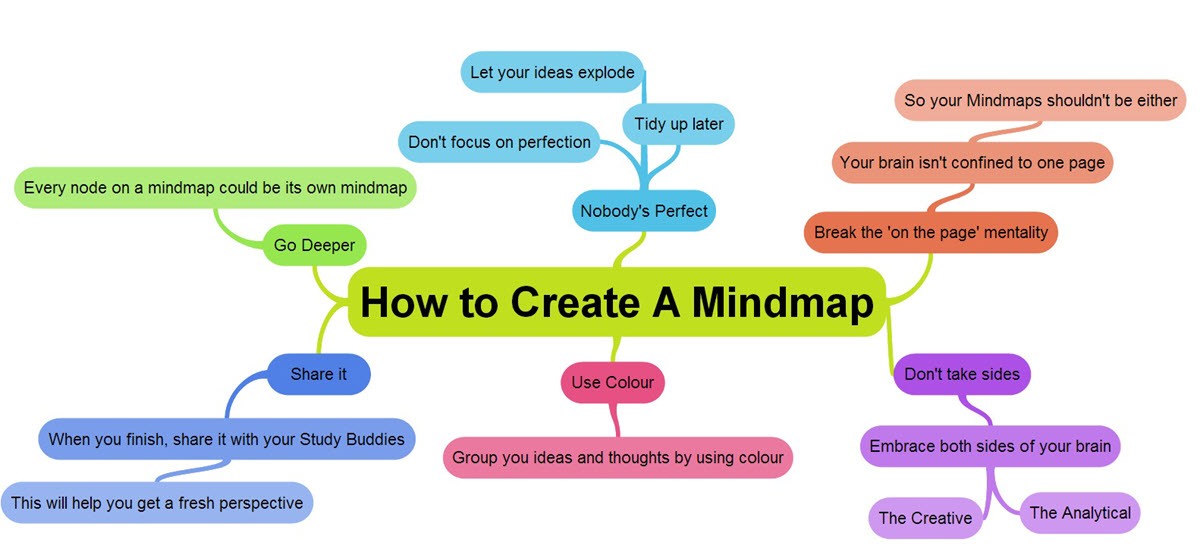The concept of mind mapping was developed by Tony Buzanin, who was an English psychologist, in the 1960’s. Mind mapping has received recognition in the business as well as academic world. Basically, in mind mapping we represent ideas and concepts in a graphical way. It is a unique tool of visual thinking which is quite handy in organizing information for us. It facilitates us in exploring, understanding, recalling and creating new ideas in a better way. Most importantly the power of mind mapping lies in its simplicity.
The concept of mind mapping can be practically useful in all aspects of life, as it improves human learning. With the help of clear thinking it will enhances our performance. Since the 1960’s, the growth-curve of this concept has been getting higher in a considerable way. Moreover, this concept has been applied by all Fortune 2000 companies consisting of: Hewlett Packard, General Motors, British Petroleum, Oracle, UBS, IBM, Boeing Aircraft and a lot more. In contrast to conventional note taking or linear writing, in a mind map the information is organized in such a way that looks very closely to how the human brain works in reality.
How to Use a Mind Map
As this activity is artistic as well as analytical, it involves human brain in a highly engaging way, assisting in its every cognitive task. First of all, we start working in the center of a blank page which should be turned sideways. The rationale behind working at the center of the page is that it gives our brain the freedom to move in every direction. Moreover, it gives us the opportunity to express ourselves in more spontaneous and natural way. For our central idea we can used a picture or an image because a simple image can represent thousand words and it facilitates us in using our imagination. With the help of a central image the creation of a mind mapping can become more exciting and it can keep us more focused.
After that, the next step in how to use a mind map is that the main branches have to be connected with the central image and then the second and third level branches must be connected to the first and second level branches, and so on. The logic behind doing so is that the human brain works by association and it likes to relate two or more things together. We will be in a position to better comprehend and remember more easily by connecting the branches. It is suggested to work with different colors during the entire course of this activity as colors can be stimulating to our brain just like the images. Likewise, colors can remarkably complement our creative thinking, and it can be more exciting in that way.
Furthermore, instead of being in a straight line, our branches must be curved because our human brain can get bored with straight-lined branches. When it comes to text, it is best that only one key word is used per line for the reason our mind map will have more flexibility and power with single key words. Now it must be kept in mind that there is no one standard approach for creating a mind map. So, it is a personal choice if we want to use more than one key word to a branch. We have to make choices in light of what works effectively for us to achieve the desired objectives.
A mind map can also be created on our phone, tablet or computer. Its plus points is that we can create them quite fast by not worrying much about the map size, branches, adding information, colors and in what ways images can be used.
Benefits of a Mind Map
Overall the mind mapping can be very beneficial for business organizations. The most important benefit is that it helps us to grasp a big overview of the main issue we are trying to analyze. Additionally, it provides us more clarity about our ideas, goals, and actions. With the help of mind mapping our ability to discover detailed extracts of information is improved in a great way.
Another plus point of a mind map is that it is more engaging as compared to a regular and boring list of daily tasks that we have to complete. It provides the advantage of easily understanding the hierarchy of the tasks and the link between those tasks. Now this makes it simpler to focus objectively on the productive tasks with top priority. Similarly, it is difficult for us to remember all tasks in our head that we have to complete. But we place them on a mind map with all the related particulars we can actually manage our performance about what should be done, when it should be done and in what ways it should be done by us.






